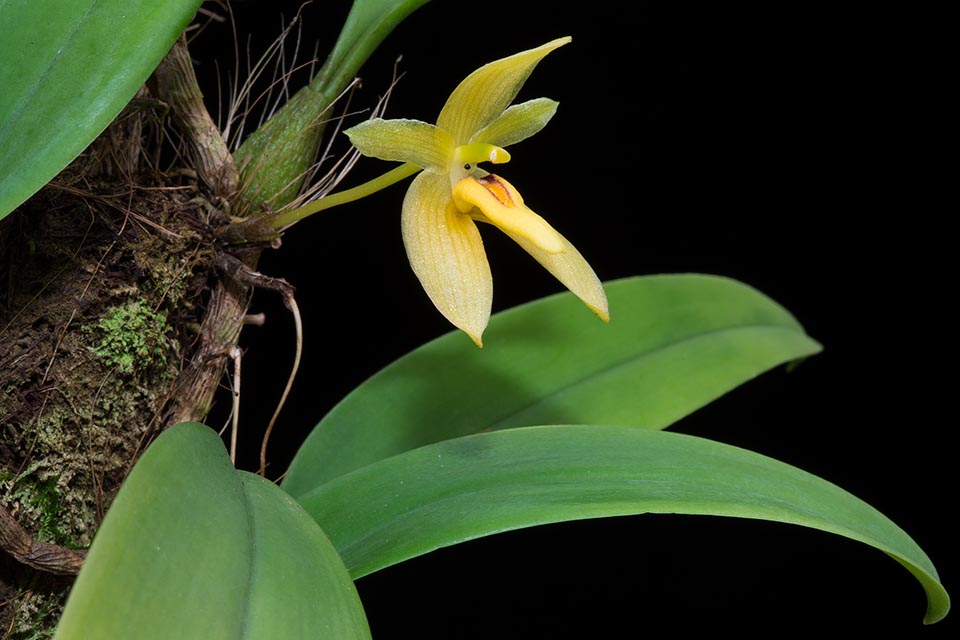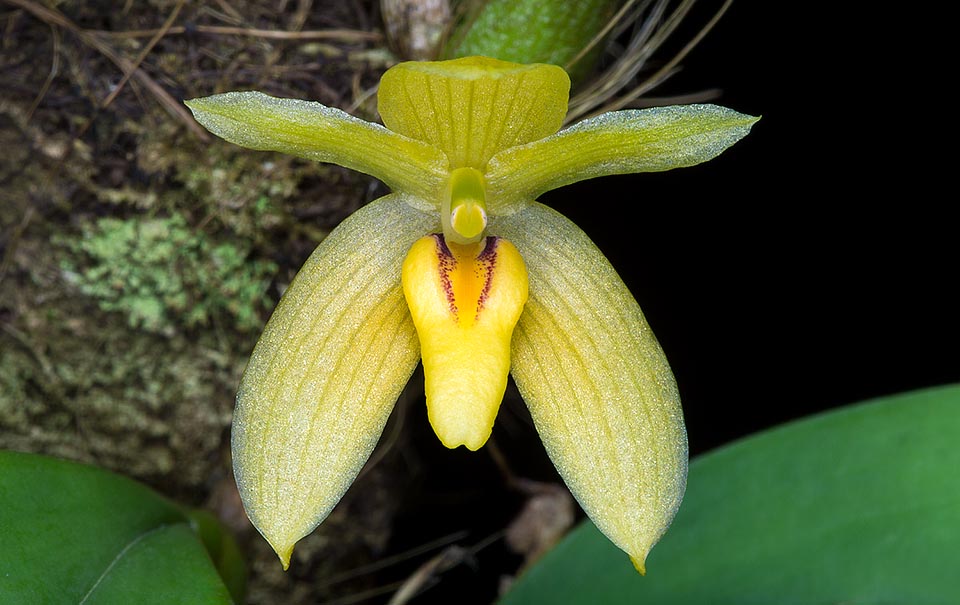Family : Orchidaceae

Text © Pietro Puccio

English translation by Mario Beltramini
The species is native to Borneo, Peninsular Malaysia, Singapore, Sumatra and Thailand where it grows on the trees of the humid forests from the sea level up to about 1000 m of altitude.
The name of the genus is the combination of the Greek substantives “βολβός” (bolbos) = bulb and “φύλλον” (phyllon) = leaf, with reference to the leaves growing at the apex of the pseudobulbs; the name of the species is the Latin adjective “pileatus, a, um” = provided of pileus, a felt hat worn by the Romans during the feasts, with reference to the shape of the anther.
The Bulbophyllum pileatum Lindl. (1844) is an epiphytic species with creeping rhizome rooting at the nodes, of about 3 mm of diameter, and thin pseudobulbs, spaced of 4-8 cm, 1,5-2,5 cm long and of 0,7-0,8 cm of diameter, provided at the apex of only one oblong-elliptical leaf with acute apex, about 15 cm long and 5 cm broad.

The Bulbophyllum pileatum is an epiphyte with creeping rhizome rooting at the nodes, of the humid forests of South-East Asia © Giuseppe Mazza
It reproduces by seed, in vitro, and at amateur level by division, with each section provided of at least 3-4 pseudobulbs.
Orchid of easy cultivation; requires a partial shade, medium-high temperatures, 22-36 °C in summer, 16-26 °C in winter, high humidity, 70-90%, and air in constant light movement.

The inflorescences have one only flower, slightly scented, of about 5 cm of diameter. Easy to grow © Giuseppe Mazza
The species is reported in the appendix II of the CITES (species whose trade is internationally ruled).
Synonyms: Sarcopodium pileatum (Lindl.) Lindl. (1853); Phyllorchis pileata (Lindl.) Kuntze (1891); Phyllorkis pileata (Lindl.) Kuntze (1891); Bulbophyllum fibrosum J.J.Sm. (1920).
→ For general notions about ORCHIDACEAE please click here.
